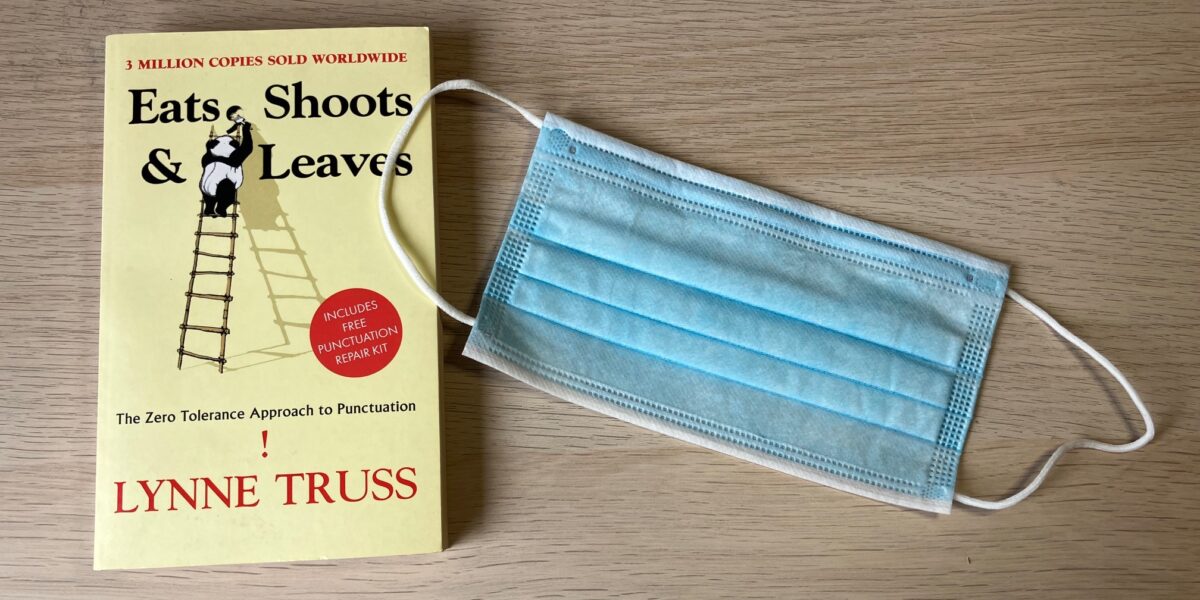Twenty years ago, British author Lynne Truss published a humorous book-length rant about punctuation, called Eats, Shoots & Leaves. The title refers to a typographical error in a dictionary definition of “panda.” Because of a misplaced comma, the animal was accused of walking into a restaurant, ordering a meal and then shooting another customer before walking out.
So it is with the phrase, “so long COVID.” After three years of overwhelmed hospitals, lockdowns, isolation, quarantines, bubbles, restrictions, vaccines, boosters and community immunity, Canadians are happy to say goodbye to COVID. Unfortunately, the sign-off “so long, COVID” is premature.
Virus continues to circulate
At the start of April 2023, some 3,000 Canadians were in-hospital for COVID treatment and 170 were in the ICU. These numbers are decreasing slowly week after week, but they remind us that some people still become sick enough to require hospitalization and intensive care for the virus.
Not surprisingly, the majority of hospitalized Canadians have not been vaccinated or have had only one or two shots. This demographic remains very susceptible to severe COVID and the statistics continue to show that vaccinations are the best way to protect one’s health.
How many vaccinations?
The World Health Organization (WHO)’s Strategic Advisory Group of Experts on Immunization (SAGE) recently announced that it no longer recommends routine follow-up COVID-19 boosters for people with a medium or low risk of developing severe illness from the virus. Canadian health officials generally agree.
SAGE classifies high-risk populations as “older adults; younger adults with significant comorbidities (e.g., diabetes and heart disease); people with immunocompromising conditions (e.g., people living with HIV and transplant recipients), including children aged 6 months and older; pregnant persons; and frontline health workers.”
This is not to say that those who are vaccinated cannot contract COVID. They can and they do, but if they do, it is generally a much milder version of the virus. Many people have COVID and do not even know it, because their symptoms are so mild. Anecdotal evidence suggests that most Canadians have been exposed to COVID at some point.
So, should we move the comma to read, “So long, COVID”? Not yet.
So, long COVID
Where else could the comma be placed? “So, long COVID” is receiving more research attention. And more press. The after-effects of being infected with COVID-19 are many. They range from subtle to severe and they can last from a few days to months, perhaps even longer. They can also come and go.
In Canada, research suggests a long list of potential symptoms of long COVID for adults:
- fatigue
- trouble sleeping
- shortness of breath
- general pain and discomfort
- cognitive problems, such as:
- memory loss
- difficulty thinking or concentrating
- mental health symptoms, such as:
- anxiety
- depression
Children can also experience long COVID, with symptoms like:
- fatigue
- headaches
- abdominal pain
- sleep problems
- shortness of breath
- cognitive problems, such as:
- lack of concentration
- difficulty thinking or concentrating
- muscle aches and joint pains
Many of these symptoms are similar to those for a wide variety of illnesses, making it difficult to diagnose long COVID. Moreover, not everyone has the same symptoms, not everyone experiences them to the same extent, and not everyone experiences them at the same point and for the same length of time.
Long COVID is not COVID and there is no test for it. A process of elimination is helpful in identifying long COVID.
Time is also an issue. With COVID-19 being a relatively recent pandemic, the research on post-infection after-effects is just beginning.
The answer to the question, “so, long COVID?” ironically, is a long way off.
The future of infection
With COVID-19 now in the endemic stage, Canadians are learning to live with the virus. This is not the same as living without it. COVID will likely be with us for many years, if not permanently. The hope is that at some point, it will be no more of a risk than seasonal flu.
But that hope is deceptive. Annual influenza kills thousands of people each year in Canada, although rates declined during the worst of the COVID pandemic.
Tracking influenza takes place year-round. FluWatchers are Canadian volunteers who normally track the flu, but with the global pandemic, they’re also tracking COVID-19. Volunteers receive an email once each week with three questions asked about fever, cough and COVID-19 testing. Signing up for FluWatchers contributes to the research and statistics collected about influenza and COVID-19. It’s confidential, too.
Unfortunately, there is a meme circulating on social media that inaccurately claims that deaths from seasonal flu are higher, even with vaccines, than deaths from COVID, even without vaccines. Not true.
In Canada, between 2,000 and 8,000 people per 100,000 die of the flu each year. Influenza is one of the leading causes of death in this country. Still, COVID-19 is more serious, more contagious and more deadly. In 2020, the rate of death per 100,000 people was almost three times greater for COVID than for influenza.
Two gruesome statistics from Statistics Canada stress the seriousness of COVID-19:
“The pandemic has had a significant impact on mortality in Canada, contributing to the largest annual decline in life expectancy since the vital statistics registration system was introduced in 1921. COVID-19 became the third leading cause of death [emphasis mine], with the loss of 16,151 Canadian lives attributed directly to the disease in 2020.
“Life expectancy fell by more than half a year in 2020, the largest single-year decline in Canada since national vital statistics started to be collected in 1921.”
It really is too soon to say, “so long, COVID.” And it appears that “so, long COVID” also will remain a familiar refrain for some time. The power of punctuation notwithstanding, the phrases are a pair that Canadians should get used to.




